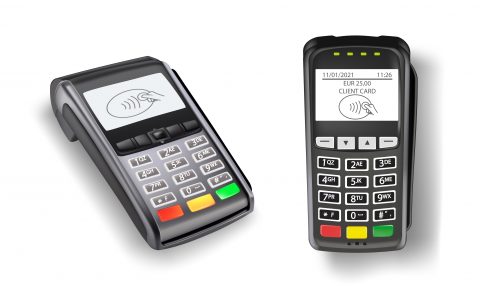How Telematics Is Redefining Risk for Commercial Auto Fleets
13 June 2025
5 Mins Read

- What Is Telematics and Which Data Does It Capture
- Why These Data Streams Matter to Commercial Auto Insurance
- How Mutual RRGs Personalize Rates With Telematics
- Real World Gains for Fleets and Insurers
- Quick Snapshot of Benefits
- Implementation Steps for a Data-Driven Safety Program
- Navigating Privacy and Regulatory Questions
- The Road Ahead: Predictive Safety and Integrated Ecosystems
- Understanding The Caveats
- Conclusion
Fleet safety used to depend on reports that arrived weeks after an incident. By the time managers saw the data, drivers had already repeated risky habits, and repair costs were locked in.
A small cellular device now streams speed, location, and even video in real-time, allowing supervisors to resolve issues on the same day and insurers to price exposure with fresh evidence.
If you’re in the fleet business and want to learn about the benefits of telematics for commercial fleets, then this is the right place.
What Is Telematics and Which Data Does It Capture
A telematics gateway is either plugged into the diagnostics port or mounted under the dash, providing its power supply. Once activated, it transmits a rich mix of signals every few seconds.
- GPS latitude and longitude that prove the route choice.
- Speed readings with second‑by‑second detail.
- Harsh acceleration and braking events that flag near misses.
- Engine fault codes and fuel burn trends.
- Seat belt engagement and driver identity tokens from electronic logs.
Many fleets add forward or dual cameras. The system can store up to ninety days of history in encrypted cloud storage. Every data point is time-stamped and tamper-resistant, ensuring it can withstand scrutiny in court if a claim is disputed.
Why These Data Streams Matter to Commercial Auto Insurance
Crash severity hinges on speed at impact, reaction time, and lane position. Telematics records each factor in numeric form.
Underwriters can model loss cost at the tractor level rather than by fleet average. Real-time alerts prompt coaching that cuts claims before they happen.
In STAR Mutual RRG’s Auto Liability programs, telematics data is used to inform underwriting decisions, allowing pricing to reflect better each policyholder’s current risk characteristics rather than relying solely on historical loss runs or industry averages.
How Mutual RRGs Personalize Rates With Telematics
Its policyholders own a Mutual RRG. It lets transportation companies with similar liability risks pool resources and insure themselves. This gives more control, lower costs, and tailored Auto Liability coverage.
Telematics aligns perfectly with this structure.
- Clean data from start‑up fleets can replace years of loss history.
- Video verification speeds claim handling and curbs fraud costs.
- Continuous logs prove compliance with hours‑of‑service rules, a point that often drives litigation.
STAR Mutual RRG issues decisions within minutes using its own smart underwriting platform.
It offers coverage in multiple states and supports a wide range of transportation classes. Premium credits reflect not only older reports, but also current safety habits.
Real World Gains for Fleets and Insurers
Imagine: a flatbed operator equipped with dual cameras may be able to close minor claims twenty days faster because fault can be settled on the same day.
Some fleets report annual savings on Auto Liability ranging from eight to fifteen percent, with additional returns possible when dividends are distributed.
Transparency also boosts morale. Drivers trust scorecards that come from sensors instead of anecdotal notes.
Quick Snapshot of Benefits
- Fewer severe injuries and lower legal exposure.
- Faster claim settlement and reduced downtime.
- Premium credits that reflect current conduct.
- Evidence that satisfies shipper audits and contract bids.
Implementation Steps for a Data-Driven Safety Program
Below is a concise action plan any fleet can follow to embed telematics into daily operations:
- Start by selecting a telematics vendor that offers an open data feed for insurers.
- Install devices on every power unit and set a five-second upload rate.
- Create scorecards that highlight incidents of speeding, distraction, and fatigue.
- Coach drivers weekly with positive reinforcement and clear targets.
- Share the live feed with the underwriting partner and request credits.
- Review trend dashboards each quarter and update safety goals.
Each step builds on the last. By month six, most fleets see fewer near misses and lower claim frequency.
Navigating Privacy and Regulatory Questions
Drivers often worry that cameras invade personal space. Address the concern early. Explain that inward lenses can be set to record only during harsh events.
Store all footage on secure servers with strict access logs and controls. Remind teams that federal guidelines already require electronic logs, so the leap to full telematics is small.
As more states introduce rules on data consent and biometrics, Mutual RRGs comply with these rules by adopting group-level data agreements that outline usage, retention, and deletion policies. Clear language removes doubt and keeps compliance costs low.
The Road Ahead: Predictive Safety and Integrated Ecosystems
Real-time data is just the start. Maintenance platforms use the same gateway to track fault codes and schedule repairs before breakdowns happen.
Some freight brokers factor safety data into load decisions. Insurers are moving in the same direction, using behavior-based inputs to update pricing more dynamically.
Understanding The Caveats
We have already invested considerable time and energy in understanding the benefits of telematics for commercial fleets. However, we are not done yet. Apart from the pros, the system also has certain cons.
Therefore, to help you make a better choice, here are some of the proven and observed caveats of telematics for commercial fleets. Here we go:
- Privacy concerns: Telematics primarily rely heavily on extracting and collecting data. Subsequently, the data is stored in the cloud, which raises concerns about privacy. Anyone with sufficient knowledge about hacking can access the said data without any issues.
- Data Inaccuracies: Teklematics are not failure-proof. Several aberrations, such as unstable networks, GPS malfunctions, and misinterpretations, can lead to inaccurate data readings.
- Higher Premiums: Telematics rewards drivers who drive safely; however, actions such as overtaking and hard braking result in penalties. Therefore, drivers might have to pay higher premiums.
- The initial cost of installing a telematics system can be quite high. Therefore, installing the system can be a financially taxing job.
Conclusion
Telematics has shifted risk control from the back office to the driver’s seat, and this is one of the most significant benefits of telematics for commercial fleets.
Fleets that embrace live data cut accidents, lower claims, and win better freight. Insurers that harness the same feed can price exposure with unmatched accuracy.
With STAR Mutual RRG’s multistate commercial auto liability program, agents and trucking fleets gain access to the coverage that evolves with real-world data. Thus helping their clients grow safely and competitively. Ask your insurance agents to get a quote.
Read Also:



















Comments Are Closed For This Article